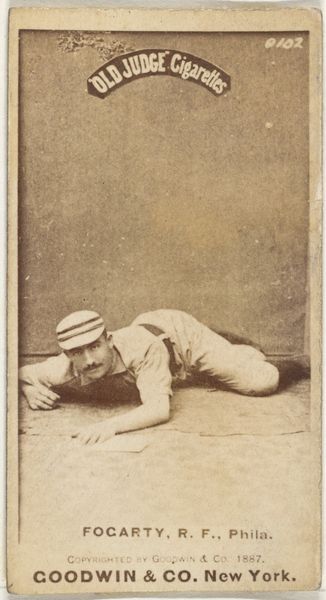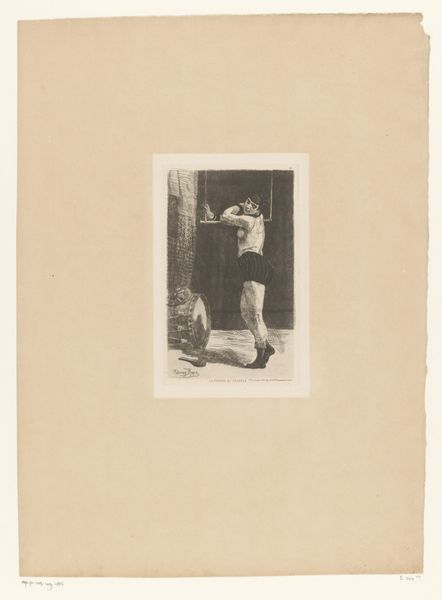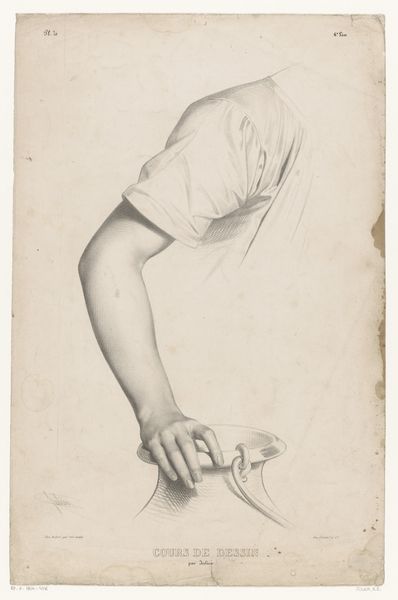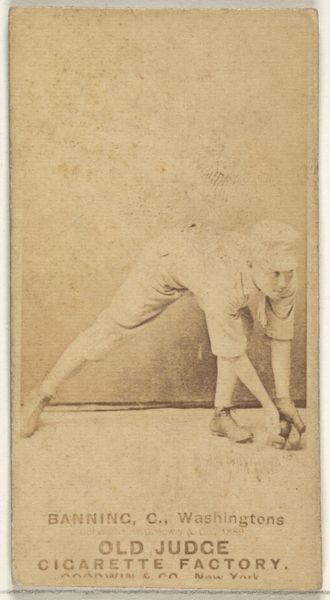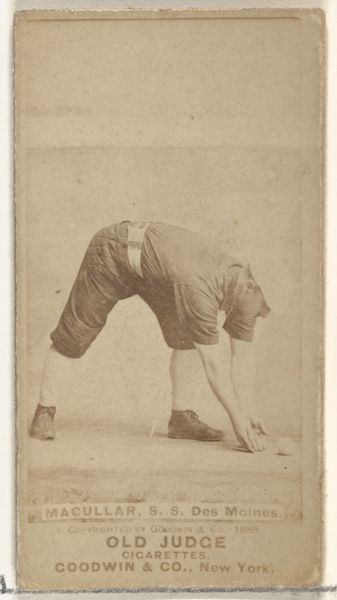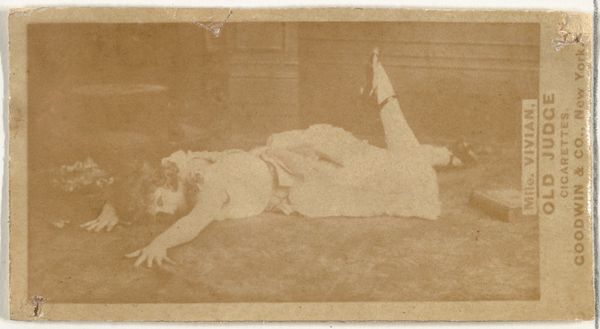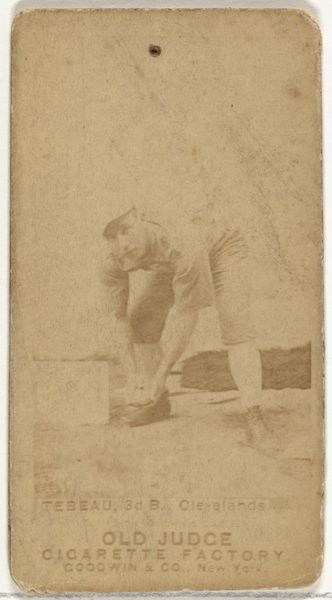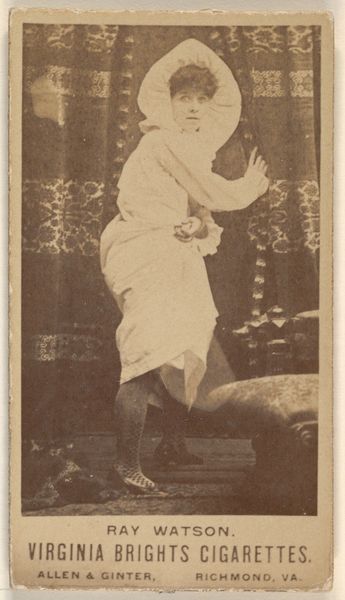
George Quintus Shoch, Right Field, Washington Nationals, from the Old Judge series (N172) for Old Judge Cigarettes 1887
0:00
0:00
drawing, print, photography
#
portrait
#
drawing
# print
#
impressionism
#
baseball
#
photography
#
men
#
athlete
#
realism
Dimensions: sheet: 2 11/16 x 1 3/8 in. (6.9 x 3.5 cm)
Copyright: Public Domain
Curator: I’m drawn to the somewhat melancholic feel of this albumen print. It's titled "George Quintus Shoch, Right Field, Washington Nationals" from the "Old Judge" series made around 1887 by Goodwin & Company. Editor: What immediately grabs me is the materiality of it. Here we have an albumen print, a photographic process that was heavily reliant on egg whites to bind the light-sensitive chemicals to the paper. This intersection of mass-produced photography and a decidedly pre-industrial substance is really striking. Curator: Absolutely. Think about the cultural landscape at the time. Baseball's popularity was exploding. Suddenly, stars like Shoch were becoming public figures. These cards, distributed with Old Judge Cigarettes, became early forms of celebrity endorsement, contributing to the sport's rapidly expanding appeal. Editor: And considering the sheer quantity of these cards produced, the demand for albumen must have been enormous! It gives you a real sense of the industrial processes behind the late 19th-century celebrity machine. I mean, imagine the number of eggs… it's almost comical. Curator: The image itself is fascinating. Shoch is captured mid-action, hunched over, seemingly retrieving a ball. The somewhat blurry quality suggests motion, a stark contrast to earlier, more posed portraits. Editor: That blurriness, that imperfect capture, it points to the limitations of the technology, doesn’t it? The image isn't striving for timeless artistry, it's a document, capturing a fleeting moment of labor and commerce combined. Also, the branding right on top inextricably connects tobacco and sports culture. It definitely says a lot about consumption, spectacle, and the rise of advertising at that moment. Curator: It's a convergence of social and material history. We see the advent of mass media and its symbiotic relationship with sport and industry shaping popular culture in ways that endure to this day. Editor: Examining this photograph reminds us that images, even ones mass-produced, are not just representations. They're also products, commodities embedded within particular material and cultural systems. Curator: I agree completely. Studying it helps illuminate the broader historical context and public impact of images and the commercial forces driving image production.
Comments
No comments
Be the first to comment and join the conversation on the ultimate creative platform.

